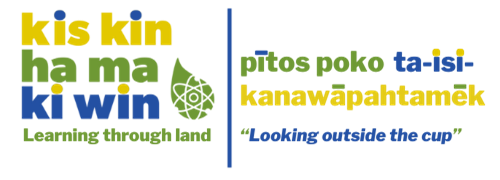Regardless of its intentions, most of the research conducted on and with disadvantaged groups in society is deficit-based, highlighting only adverse impacts and vulnerability. This is especially true for Indigenous communities. Media coverage inevitably reinforces negative stereotypes of these cultures, painting them as vulnerable or even antiquated and obsolete. Even approaches that resist such tendencies, should they continue to focus only on adverse impacts, have little relevance for communities as they attempt to navigate the many systemic barriers and outright racism that still persist. This is why focusing on the solutions, and not just the problems is an important part of research and monitoring. The most effective community-based projects look at how to address things in a proactive way that highlights the strengths of the community.
Thirty years after the last residential school was closed, the national Truth and Reconciliation Commission released its final report containing 92 Calls to Action that challenged all Canadians to at once recognize the truth of the violence associated with the attempted assimilation of these cultures while also working for a common and reconciled future together. Educational institutions such as universities, played a key role in the Calls to Action, which argued that learning institutions should act to reflect the importance of Indigenous cultures, provide additional resources to Indigenous programs of learning, and enable community to play key roles in setting priorities and designing programming. These efforts affirm the importance of Indigenous ways of knowing while finding ways of enabling Indigenous success in schools and postsecondary institutions.
As an alternative, 10 Calls to Action have been proposed that are relevant to natural scientists, these range from formally acknowledging the sociopolitical histories that surround their research, to building relationships and collaborations with affected Indigenous communities to reframing science to best reflect reconciliation at all stages. Initial efforts were made to facilitate community participation and to champion “community-based” approaches to research.
Many governments and industry started to acknowledge the importance of “traditional knowledge” and efforts were made to document this knowledge and to include it in decision-making in the 2000s. Thus, Manitoba Hydro created a “two-track” approach to new projects where data arising from science-based research and from “Aboriginal Traditional Knowledge” were both acknowledged and used in operations. However, these efforts have been criticized as inadequate since this knowledge is bureaucratized and removed from the knowledge holders themselves. Any differences in influence between the two systems were ignored and the relevance of Indigenous science ultimately overlooked or excluded by Western science.
Data generated by research should belong to and be controlled by affected communities. In Canada, such initiatives are reflected by the principles of OCAP or First Nations Ownership of, Control over, Access to, and Possession of data. OCAP was first developed by the First Nations Information Governance Centre. A national First Nations data governance strategy and 10 regional First Nations Information Governance Centers have since been established across Canada. Each works with the First Nations under its purview to promote data sovereignty. In part because of this shared colonial legacy, Indigenous communities and organizations in Canada and the US as well as Australia and New Zealand are resisting such narratives and asserting their own priorities. The rallying call is one of “data sovereignty”. It builds on the principles reflected in the United Nations Declaration on the Rights of Indigenous Peoples (UNDRIP) and recognizes Indigenous communities as sovereign nations that have the constitutionally protected and inherent right to exercise authority over data that are relevant to their own needs and aspirations.
Community-based monitoring (CBM) can be seen is a collaboration of government, industry, academic institutions and community groups working together to monitor and respond to issues of common community concern. The intent is to reframe monitoring to include community aims and objectives that are ideally reflected by outcomes that have greater relevance. CBM is a multi-stage process that begins with “ideation” or conceptualization to data collection and analysis to the sharing of ideas, that originates from the community.
There is still hesitancy among some natural scientists regarding the credibility of Indigenous science in the absence of independent verification, its lack of relevance for non-local decision-making, and frequent disagreements between the two ways of knowing. They have historically arisen to address gaps in knowledge and problems in accessing sites and affordability, especially in remote environments. By engaging local community members, social capital is created by working together.
Changes in technology are seen as playing a key role in facilitating community engagement, whether this relates to digital apps like Our Data Indigenous in the prairies or the camera traps in monitoring wildlife movement and the use of drones in mapping biocultural landscapes. The spread of smartphone technology and online portals will further enhance the importance and usefulness of this discipline. These technologies help facilitate data collection and analysis and youth engagement but are difficult to maintain over extended periods of time and represent further challenges around the local control over data.
Indigenous peoples in Canada have Aboriginal and treaty rights that are recognized and affirmed under Section 35 of the Constitution Act. Yet, the role of CBM for asserting jurisdiction and sovereignty is rarely explored. Some argue that CBM is inherent in Indigenous governance and sovereignty. For CBM to be successful there are three important things to keep in mind: Indigenous communities and organizations should be the ones taking the lead in CBM, the ability to network and to learn from one another could arise from regional approaches to CBM, and that CBM should be integrated into more encompassing strategies of environmental governance. It is the process of re-indigenization – a foregrounding of Indigenous ways of being and knowing and relationship building and reimagining – and the transformation of a Eurocentric worldview is ultimately critical for addressing environmental decline for all people.
